Beautiful to see and even more beautiful to understand.
Geisha, Their Professionalism and the True Face
Geishas hold an exceptional allure when it comes to understanding Japan’s traditional culture or the concept of “kawaii.” While geisha quarters, which are called Chayamachi, Hanamachi, or Karyukai in Japanese, can be found in Kyoto, Tokyo, and various locations across Japan, Kanazawa stands out as a rare city that preserves its historical cityscape, providing a unique environment for geishas to refine their artistic skills. The eye on KANAZAWA editorial team introduces the mysterious, enchanting, yet lifelike reality of geishas.
Renowned as one of Japan’s historic castle towns, Kanazawa thrived under the rule of the Maeda clan during the samurai-led Edo period (1603–1868). Unscathed by war and major natural disasters, the city preserves its rich historical architecture. The three Chaya districts of Higashi, Nishi, and Kazue-machi contribute to the city’s charm, maintaining a traditional townscape that serves as a highlight of Kanazawa tourism. The Chaya districts feature graceful wooden structures known as “chaya,” which serve as venues for refined entertainment and socializing. Here, geishas, known as “Geiko” in Kanazawa, showcase various performing arts, including singing, dancing, and musical performances. They also engage guests in sophisticated conversations.
Dressed in elegant kimonos with gracefully open napes, their faces adorned with white makeup, and intricately styled wigs, geishas exude a mysterious and enchanting allure, captivating both international visitors and quite possibly many Japanese. What is clear is that contemporary geishas are skilled professionals adept at entertaining guests with refined artistic skills and engaging conversation, embodying an independent and empowering career for women. Kanazawa is currently home to 14 chaya, where geishas operate as independent contractors affiliated with each establishment. While they participate in evening banquets, the majority of their daytime hours are devoted to training, which includes singing, playing the shamisen (a three-stringed instrument), Japanese dance, taiko drumming, and Japanese flute playing. Geishas do not reside in the chaya but lead independent lives, managing their own expenses for attire and training.
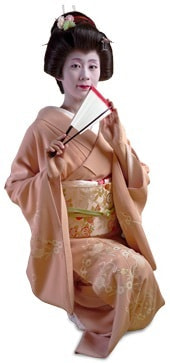
Renowned as one of Japan’s historic castle towns, Kanazawa thrived under the rule of the Maeda clan during the samurai-led Edo period (1603–1868). Unscathed by war and major natural disasters, the city preserves its rich historical architecture. The three Chaya districts of Higashi, Nishi, and Kazue-machi contribute to the city’s charm, maintaining a traditional townscape that serves as a highlight of Kanazawa tourism. The Chaya districts feature graceful wooden structures known as “chaya,” which serve as venues for refined entertainment and socializing. Here, geishas, known as “Geiko” in Kanazawa, showcase various performing arts, including singing, dancing, and musical performances. They also engage guests in sophisticated conversations.
Dressed in elegant kimonos with gracefully open napes, their faces adorned with white makeup, and intricately styled wigs, geishas exude a mysterious and enchanting allure, captivating both international visitors and quite possibly many Japanese. What is clear is that contemporary geishas are skilled professionals adept at entertaining guests with refined artistic skills and engaging conversation, embodying an independent and empowering career for women. Kanazawa is currently home to 14 chaya, where geishas operate as independent contractors affiliated with each establishment. While they participate in evening banquets, the majority of their daytime hours are devoted to training, which includes singing, playing the shamisen (a three-stringed instrument), Japanese dance, taiko drumming, and Japanese flute playing. Geishas do not reside in the chaya but lead independent lives, managing their own expenses for attire and training.
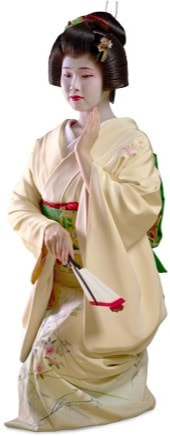
Geisha as a career choice
for the younger generation
In Kanazawa, the path to becoming a geisha is readily accessible. Most aspiring geishas are young women driven by a wish to pursue a career in traditional Japanese performing arts. They demonstrate a passion for their work and a professional dedication comparable to career women in other fields. Some women travel to Kanazawa from as far away as Tokyo and other distant locations to pursue their dream of becoming geishas in the city. People once believed that becoming a geisha was a career pursued out of economic necessity. However, in contemporary times, some women are opting to join a chaya after completing their university education. Becoming a geisha is now seen as a career choice motivated by a desire for individuality. Chaya warmly welcome and support women aspiring to become geishas through various means. Operating on a referral system, chaya provide banquets and entertainment, emphasizing the importance of trust with their clientele. While delivering exceptional hospitality to guests, this system also acts as a safeguard for the young women entrusted to the chaya.
Mastering the hospitality
skills as a geisha
In 2023, two new geishas, Ito-san and Makoto-san, made their debuts at the “Hanofuku” chaya in the heart of the Higashi Chayagai District. Their initiation into the geisha world followed an intensive six-month training period. Upon inquiry with Fukutaro-san, the proprietress of the chaya, it was revealed that their debuts represent merely the initial steps in their geisha careers. Despite the glamorous image associated with geishas, they devote themselves to rigorous training behind the scenes. They will gain valuable insights from the exemplary hospitality skills of the proprietress and senior geishas, who skillfully employ a diverse range of conversation topics and wit to elevate the overall ambience. Fukutaro-san expressed pride in Kanazawa’s chayagai districts, stating, “While those around me praise the skills of Kanazawa’s geishas, I refrain from boasting. In the performing arts world, there is never a point where you can be good enough, regardless of how hard you’ve worked.”
The referral system mentioned above can make it challenging to host gatherings at a chaya. However, opportunities to appreciate the artistry of geishas at events are increasing. Please take advantage of these opportunities to immerse yourself in the aesthetic consciousness and culture of Japan, with a special focus on geishas.
Geisha as a career choice
for the younger generation
In Kanazawa, the path to becoming a geisha is readily accessible. Most aspiring geishas are young women driven by a wish to pursue a career in traditional Japanese performing arts. They demonstrate a passion for their work and a professional dedication comparable to career women in other fields. Some women travel to Kanazawa from as far away as Tokyo and other distant locations to pursue their dream of becoming geishas in the city. People once believed that becoming a geisha was a career pursued out of economic necessity. However, in contemporary times, some women are opting to join a chaya after completing their university education. Becoming a geisha is now seen as a career choice motivated by a desire for individuality. Chaya warmly welcome and support women aspiring to become geishas through various means. Operating on a referral system, chaya provide banquets and entertainment, emphasizing the importance of trust with their clientele. While delivering exceptional hospitality to guests, this system also acts as a safeguard for the young women entrusted to the chaya.
Mastering the hospitality
skills as a geisha
In 2023, two new geishas, Ito-san and Makoto-san, made their debuts at the “Hanofuku” chaya in the heart of the Higashi Chayagai District. Their initiation into the geisha world followed an intensive six-month training period. Upon inquiry with Fukutaro-san, the proprietress of the chaya, it was revealed that their debuts represent merely the initial steps in their geisha careers. Despite the glamorous image associated with geishas, they devote themselves to rigorous training behind the scenes. They will gain valuable insights from the exemplary hospitality skills of the proprietress and senior geishas, who skillfully employ a diverse range of conversation topics and wit to elevate the overall ambience. Fukutaro-san expressed pride in Kanazawa’s chayagai districts, stating, “While those around me praise the skills of Kanazawa’s geishas, I refrain from boasting. In the performing arts world, there is never a point where you can be good enough, regardless of how hard you’ve worked.”
The referral system mentioned above can make it challenging to host gatherings at a chaya. However, opportunities to appreciate the artistry of geishas at events are increasing. Please take advantage of these opportunities to immerse yourself in the aesthetic consciousness and culture of Japan, with a special focus on geishas.
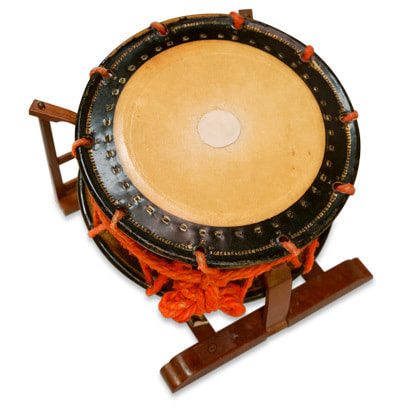
Ask “Shinbana”!
A recently debuted geisha is referred
to by the fresh name “shinbana,” meaning a new flower.
We interviewed two shinbana from Hanofuku.
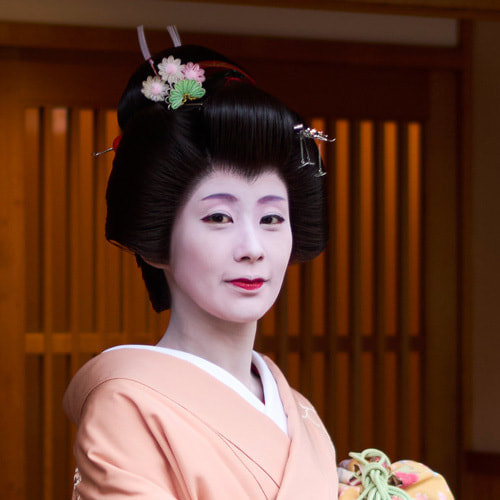
Ito-san(以と)
Debuted in February 2023
From Tokyo
My fascination with the world of geishas began in childhood when I stumbled upon a TV program featuring their profession. This fascination evolved into a lasting dream that persisted through my university years, ultimately leading me to Hanofuku after graduation, thanks to an introduction from an acquaintance.
Before debuting as geishas, trainees like me undergo a rigorous six-month apprenticeship. This dedicated period focuses on refining dance skills and mastering musical instruments. The training typically starts with traditional Japanese dance, initially causing some discomfort as it engages muscles not regularly used, leading to soreness in my legs.
Each day begins with the ritual of donning a kimono after waking up, followed by dedicated practice sessions from around 10 am to 1 pm. These sessions cover various elements such as dance, Nagauta songs, and the intricacies of tea ceremony etiquette. After a lunch break around 3 pm and final preparations, we make our appearance at the evening banquet around 6 pm. As I reflect on the past year since my debut, I aspire to continue this journey for an extended period and become a presence that can uplift the atmosphere, similar to the proprietress and senior geishas.

Makoto-san(万琴)
Debuted in October 2023
From Toyama
I discovered the geisha profession through online videos. Captivated by the opportunity to refine performing arts skills and turn them into a profession, I joined Hanofuku straight after graduating from high school.
The six-month apprenticeship presented many new challenges, including dance, kimono dressing, and cultivating the appropriate demeanor. However, fueled by my unwavering passion upon entering this realm, the sense of fulfillment eclipsed the hurdles. I chose the stage name “Makoto”, considering the stroke count of the kanji characters that symbolizes good fortune.
While the training is demanding, the senior geishas are very kind and supportive. They occasionally invite me for private meals. Witnessing the senior geishas fully immersed in the world of their performances and dance is truly captivating. Despite the considerable distance I have yet to cover, I aspire to gradually catch up, even if it’s just a little.

Debuted in February 2023
From Tokyo
My fascination with the world of geishas began in childhood when I stumbled upon a TV program featuring their profession. This fascination evolved into a lasting dream that persisted through my university years, ultimately leading me to Hanofuku after graduation, thanks to an introduction from an acquaintance.
Before debuting as geishas, trainees like me undergo a rigorous six-month apprenticeship. This dedicated period focuses on refining dance skills and mastering musical instruments. The training typically starts with traditional Japanese dance, initially causing some discomfort as it engages muscles not regularly used, leading to soreness in my legs.
Each day begins with the ritual of donning a kimono after waking up, followed by dedicated practice sessions from around 10 am to 1 pm. These sessions cover various elements such as dance, Nagauta songs, and the intricacies of tea ceremony etiquette. After a lunch break around 3 pm and final preparations, we make our appearance at the evening banquet around 6 pm. As I reflect on the past year since my debut, I aspire to continue this journey for an extended period and become a presence that can uplift the atmosphere, similar to the proprietress and senior geishas.
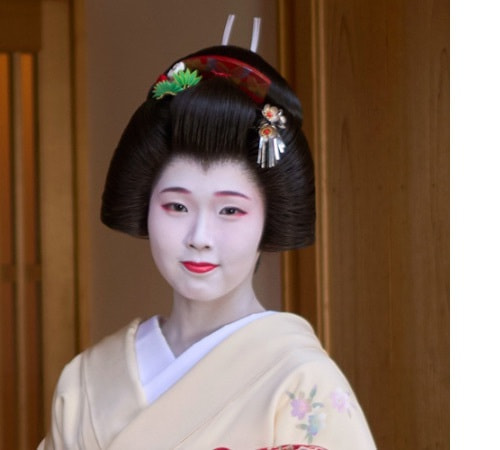
Debuted in October 2023
From Toyama
I discovered the geisha profession through online videos. Captivated by the opportunity to refine performing arts skills and turn them into a profession, I joined Hanofuku straight after graduating from high school.
The six-month apprenticeship presented many new challenges, including dance, kimono dressing, and cultivating the appropriate demeanor. However, fueled by my unwavering passion upon entering this realm, the sense of fulfillment eclipsed the hurdles. I chose the stage name “Makoto”, considering the stroke count of the kanji characters that symbolizes good fortune.
While the training is demanding, the senior geishas are very kind and supportive. They occasionally invite me for private meals. Witnessing the senior geishas fully immersed in the world of their performances and dance is truly captivating. Despite the considerable distance I have yet to cover, I aspire to gradually catch up, even if it’s just a little.
ART OF GEISHA
2024 SAKURA SEASON
3 Types of the Geisha Experience
The Art of Geisha provides foreign tourists with rare opportunities to appreciate the geisha culture this sakura season.
Purchase your tickets online and enrich your stay in Kanazawa.
https://www.artofgeisha.com








